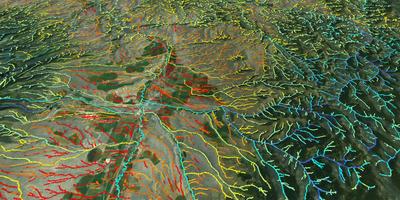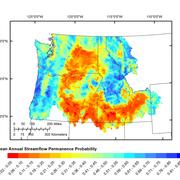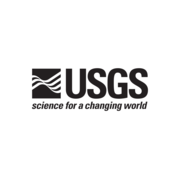Due to a lapse in appropriations, the majority of USGS websites may not be up to date and may not reflect current conditions. Websites displaying real-time data, such as Earthquake and Water and information needed for public health and safety will be updated with limited support. Additionally, USGS will not be able to respond to inquiries until appropriations are enacted. For more information, please see www.doi.gov/shutdown
Wyoming-Montana Water Science Center
Home
Welcome to the USGS Wyoming-Montana Water Science Center, your source for water-resource data and information.
Current Wyoming-Montana Water Conditions

Explore Wyoming-Montana real-time streamflow, groundwater, and water-quality conditions and access data with our interactive map.
Current ConditionsGeospatial Research and Development to Understand Hydrologic Processes

Geospatial data, such as remote sensing images and map based information, provide an opportunity to evaluate hydrologic systems with a spatially continuous data set.
Learn moreNews
A Spatially Continuous Model of Annual Streamflow Permanence Throughout the Pacific Northwest
An interdisciplinary team comprised of USGS and university scientists has developed the Probability of Streamflow Permanence Model or PROSPER which predicts flow permanence for unregulated and minimally impaired streams in the Pacific Northwest.
StreamStats Provides New Information for Montana
Helpful new information for anyone designing structures over or near water, managing water distribution, or interested in the flow of local streams.
Birds in the Bakken: Oil Development Can Affect Critical Habitat
Many grassland bird species in the Bakken shale region, including some seriously declining populations, are displaced from their habitats as a result of oil and gas development, according to new U.S. Geological Survey research.
Publications
Changes in microbial communities and associated water and gas geochemistry across a sulfate gradient in coal beds: Powder River Basin, USA
Competition between microbial sulfate reduction and methanogenesis drives cycling of fossil carbon and generation of CH4 in sedimentary basins. However, little is understood about the fundamental relationship between subsurface aqueous geochemistry and microbiology that drives these processes. Here...
Schweitzer, Hannah; Ritter, Daniel; McIntosh, Jennifer; Barnhart, Elliott; Cunningham, Alfred B.; Vinson, David; Orem, William H.; Fields, Matthew W.Williston Basin groundwater availability, United States and Canada
The Williston Basin contains important oil and gas resources for the Nation. Freshwater supplies are limited in this semiarid area, and oil and gas development can require large volumes of freshwater. Groundwater is the primary source of water for many water users in the Williston Basin, so to better understand these resources, the U.S. Geological...
Thamke, Joanna N.; Long, Andrew J.; Davis, Kyle W.Groundwater availability of the Williston Basin, United States and Canada
Executive SummaryThe Williston Basin of the Northern Great Plains is a sedimentary basin—a geologic bowl-like structure filled with layered sedimentary rocks dating as far back as the Paleozoic age. The basin, which is nationally important for the production of energy resources, spans Montana, North Dakota, and South Dakota in the United States,...
Long, Andrew J.; Thamke, Joanna N.; Davis, Kyle W.; Bartos, Timothy T.






